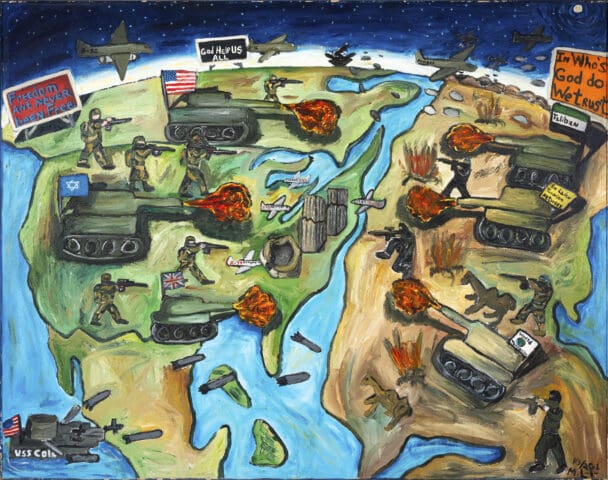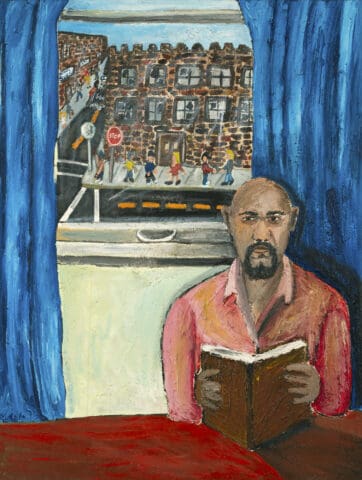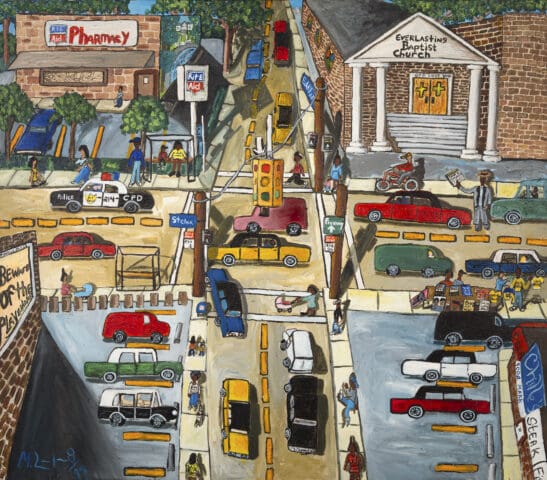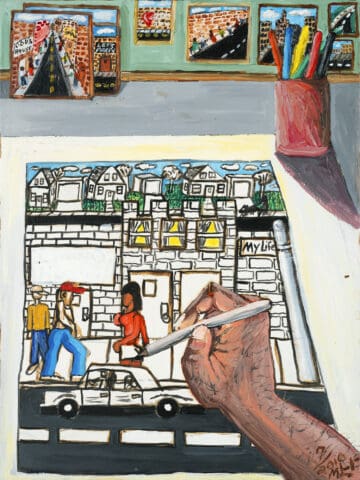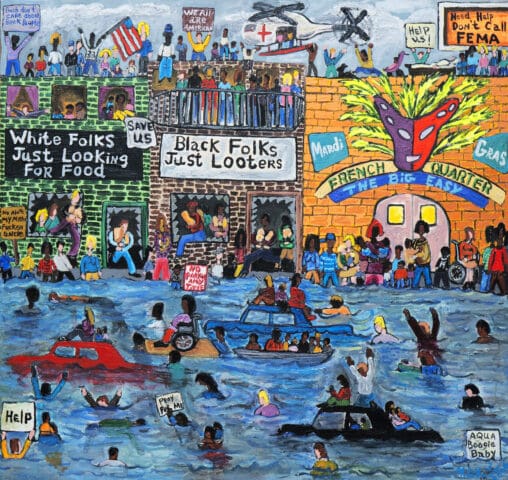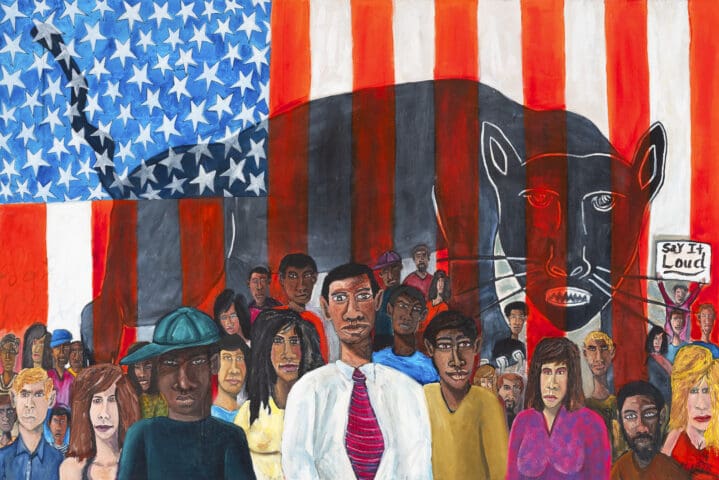Michelangelo Lovelace: Art Saved My Life
Karl and Bertl Arnstein Galleries
May 4 - August 18, 2024
When Michelangelo Lovelace (1960–2021) spoke about his life and career as an artist, he almost always began with this story: As a teenager growing up in Cleveland’s King Kennedy public housing complex, he dropped out of school to support his family. He found a variety of means to do so, some legal and some illegal. When he was nineteen, he was arrested for selling marijuana and appeared before a judge. In Lovelace’s own telling, “the judge said, ‘What can you do?’ So, I told him I could draw. He said, ‘Well, you come back down here again, I’m sending you to prison. You’d better stick to drawing.’”
Lovelace took the advice to heart. In his twenties, he studied art at Cuyahoga Community College and the Cleveland Institute of Art. He dropped out of school again, this time to make a living for his own children, and he faced poverty, addiction, and the loss of loved ones. Nevertheless, he maintained his dedication to art and crafted a unique style, seeking energy and directness.
After receiving technical training and gaining knowledge of art history, Lovelace chose to paint in an intentionally simplified manner because it allowed him to show what he called “the raw power of life in the inner cities of America.” He depicted crime, drugs, poverty, and sin, but also community, compassion, progress, and salvation. He portrayed the environment he knew—the bricks of public housing, advertising billboards, familiar intersections—as well as political events, social allegories, and scenes from his career in art.
Lovelace hoped for ideas and experiences to flow straight from his mind to the canvas, as honestly and forthrightly as he could manage. This allowed him to process and contend with harsh experiences, and to express himself to others. Before his life was cut short by pancreatic cancer, he had shown his work from New York to Los Angles and was thrilled with what he had achieved. Taking stock of his personal journey and the sense of purpose that he found in creativity, he remarked “I’m one of those people who say ‘art saved my life,’ and it truly did.”
Michelangelo Lovelace: Art Saved My Life is the first retrospective exhibition to survey the full span of the artist’s long, prolific, and remarkable career.

